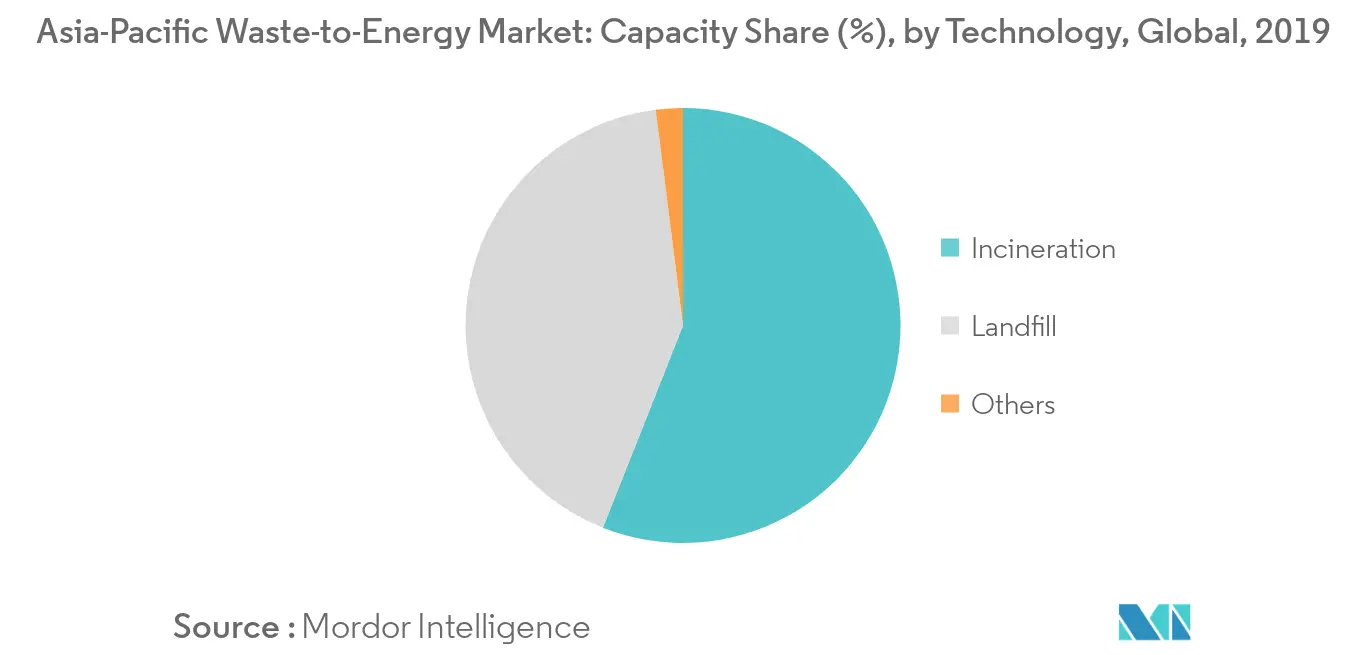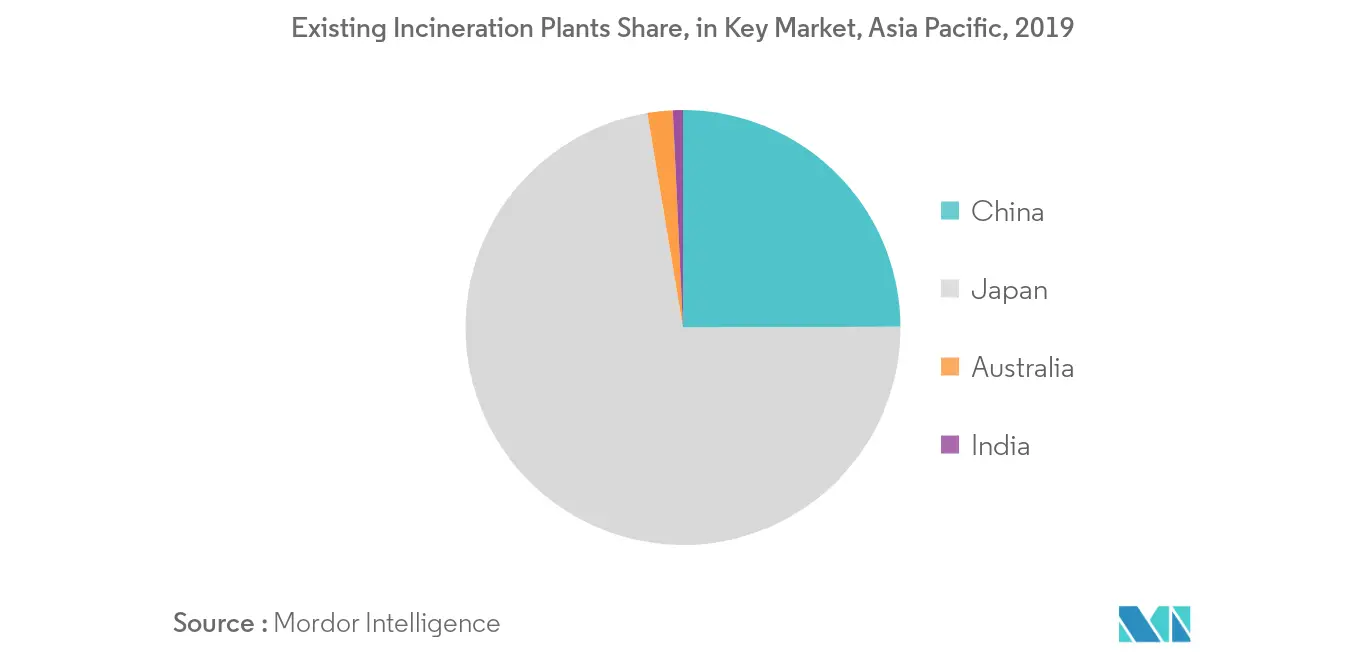Market Trends of Asia-Pacific Waste-to-Energy Industry
This section covers the major market trends shaping the APAC Waste-to-Energy Market according to our research experts:
Incineration as a Prominent Technology
- For an incineration process, waste materials are burned inside a specific chamber by raising the temperature to around 850-1450 degrees Celsius, adding oxygen to have a combustion reaction. A minimum calorific value of the waste is required for self-combustion of the trash.
- During the process, exhaust gases called flue gases are created, which is cleaned up before exiting from the facility. This flue gas contains the heat energy that is utilized to generate electricity or for heating purposes.
- The operation of incineration is more complex than the operation of a sanitary landfill. It requires well developed technical and management skills to set and adjust the parameter for the effective operation of the plant.
- During 2018, there are more than 1500 incineration plants in the Asia-Pacific region. China is one of the prominent country, that has installed the world's largest incineration plant (The Shenzhen East waste-to-energy plant) in 2019. The plant has a capacity of processing 2.7 million tonnes of waste per year and is capable of generating 1.5 billion kilowatt-hours of power per year.

China has a Significant Market
- China is the second-largest producer of municipal waste in the world that initiated waste sorting plans during 2017 and aims to recycle 35% of waste in 46 major cities, including Shanghai, by 2020.
- In China, the number of incineration plants has increased from 74 in 2008 to around 400 in 2018. Beijing is planning to double its incineration capacity, and to burn 54% of the municipal wastes by 2020. Under Chinese President Xi Jinping's plan to tackle pollution, the incineration industry is expected to continue its expansion, in order to replace stinky, polluting, land-intensive garbage dumps. Moreover, with its burgeoning economy producing vast quantities of garbage (increasing 8-10% annually), China is turning to new facilities that burn solid waste to produce electricity.
- As per International Energy Agency (IEA), China has around 7.3 gigawatts of installed waste to energy capacity, with its 339 plants during 2017. The country's waste to energy has grown by 1 GW per year on average from last five years and is expected to continue the growth with rising municipal waste.

